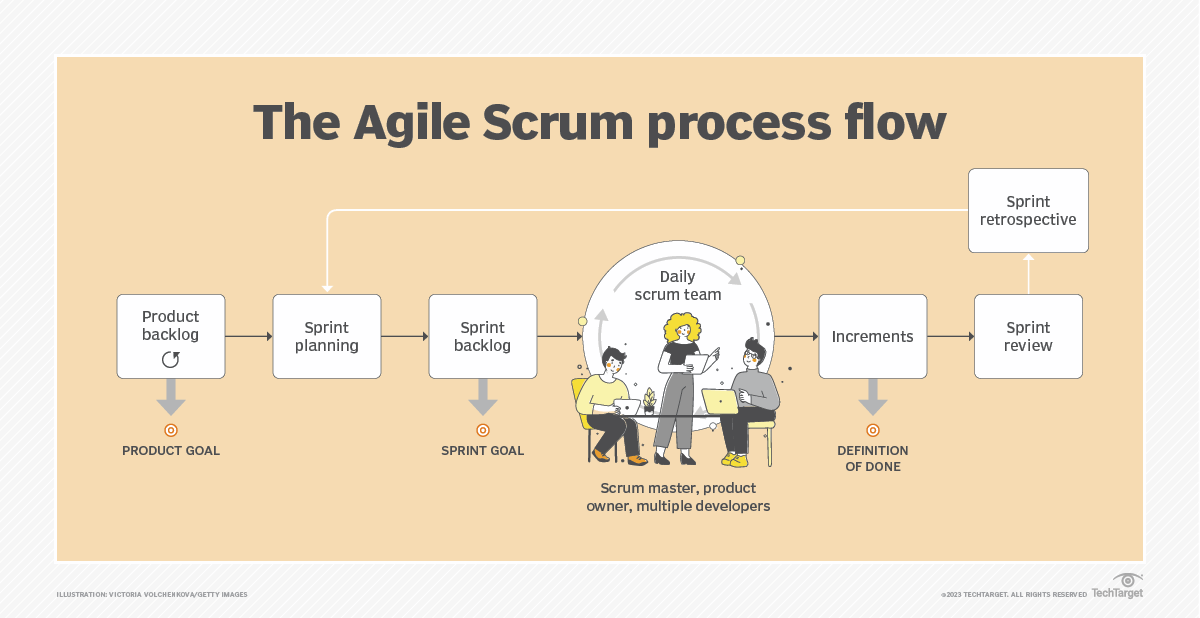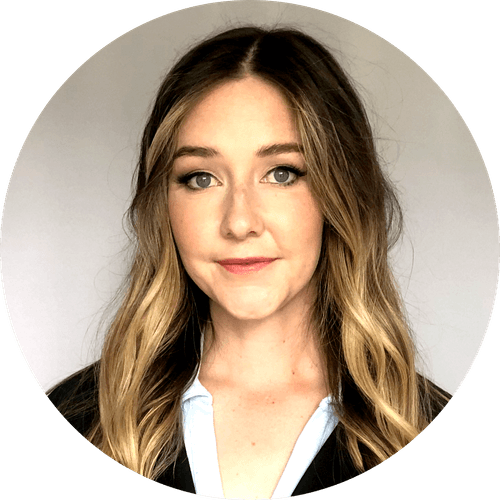What is Scrum? The Scrum Process defined in under 5 minutes
What is Scrum?
I’m going to quickly explain the Scrum process to you. In the most simple terms, I’m going to explain how Scrum works, how teams use Scrum and the process the Scrum Guide advocates for the efficient and effective development of products.
Technically speaking, Scrum is a framework, not a process or methodology. That’s what the latest version of the Scrum Guide tells us, although throughout the history of Scrum, the authors have flip-flopped on whether they want to call it a methodology, a process, a process framework or just a framework.
However, if we accept that a process is a set of repeatable, ordered steps designed to achieve a goal or produce an outcome, there is no doubt that Scrum at least includes a process.
Scrum, Sprints, Reviews and the Scrum Guide
The iterative, Agile process that Scrum includes revolves around a concept known as the sprint:
- A sprint is a product development effort that lasts for no more than a month.
- Each sprint includes a well-articulated goal developers work to achieve.
- When one sprint ends, a new Sprint immediately begins.
- Sprints are repeated ad infinitum until the product development effort comes to an end.
The aim of each Sprint is to create something tangible and of value that will become part of the finished product. These tangible elements of value are known as increments.
This is why Scrum is said to be both iterative and incremental.
- When one sprint ends, a new sprint begins. That makes Scrum iterative.
- Each sprint adds something to the final product. That makes Scrum incremental.
What are the Scrum process steps?
To meet the definition of a process, a set of ordered steps is required.
The four timeboxed, ordered steps that the Scrum process defines are as follows:
- A sprint planning event that marks the start of the sprint. (8-hour timebox)
- Daily Scrums where developers discuss progress. (15-minute timebox)
- A sprint review with stakeholders after development is done. (4-hour timebox)
- A sprint retrospective where the Scrum team introspects. (3-hour timebox)
The sprint retrospective marks the end of the sprint. Once the sprint retrospective concludes, a brand-new sprint immediately begins.

The Agile Scrum process flow defines a set of repeatable steps including planning, daily Scrums, reviews and retrospectives.
Scrum is immutable
The Scrum process lays out several requirements that are non-negotiable:
- Events should take place at the same time and place.
- Events stay within their timeboxes.
- Events take place in the order specified.
- No events are ever skipped.
The Scrum framework, as it is described in the Scrum Guide, is immutable. If any part is left out, what you are doing is not Scrum.
Every event listed in this process is required, and teams must perform them in the order and within the time constraints that the Scrum Guide defines.
Is Scrum a framework?
According to the Scrum Guide, Scrum is a framework. The word process never appears once in the Scrum Guide.
Furthermore, Scrum practitioners object vehemently and viciously whenever someone infers that Scrum is a process. Some practitioners accept that perhaps Scrum is a framework that includes a process, but even that point is hotly contested.
The argument put forth by the Scrum community is that the Scrum Guide’s descriptions make it too high-level to be considered a process. Here are some examples:
- It does not tell Scrum teams what tools to use.
- It does not tell Scrum teams how to collaborate.
- It encourages Scrum teams to use external processes.
- It instructs Scrum teams to empirically discover methods that work best for them.
The Scrum Guide describes Scrum as a lightweight, purposefully incomplete framework that “helps people, teams and organizations generate value through adaptive solutions for complex problems.”
At best, Scrum provides an approach to find solutions to complex problems. It doesn’t solve your problems for you.
Is Scrum an Agile process?
Scrum doesn’t attempt to provide answers to every product development challenge a development team will encounter, nor does it place any restrictions on the techniques or methods a Scrum team is allowed to use.
For that reason, the Scrum community fights back hard against anyone who dares to call Scrum a process, or even suggest that Scrum includes a process.
The Scrum community believes practitioners must avoid the mechanical Scrum anti-pattern where teams blindly follow the steps outlined in the Scrum Guide. Such teams do not get the full benefit of Scrum.
Delving into Doublespeak
From a certain perspective, it’s easy to see why the Scrum community resists calling Scrum a process.
Then again, there are also good reasons why parents want their kids to believe that a plate of broccoli is a bowl of ice cream—but that doesn’t make it true.
- Does Scrum describe a set of steps to follow? Yes.
- Must those steps be performed in a specific order? Yes.
- Are they intended to generate a tangible outcome? Yes.
- Must they be performed iteratively and repeatedly? Also yes.
If we define a process as a repeatable, ordered set of steps performed to produce an outcome, it becomes difficult to argue that Scrum doesn’t at least include a process.
In fact, the majority of the 14-page Scrum Guide is dedicated to laying out exactly that. One could reasonably argue that Scrum is a process—perhaps even more so than a framework—but brace yourself for pushback if you say so out loud.
The Scrum Framework Explained
The debate over whether Scrum is a framework, a methodology, or an Agile process—and whether it contains a process or is one—is often more distracting than helpful.
Scrum defines itself as a lightweight, flexible, and intentionally incomplete framework. And honestly, that’s a good-enough description.
At its core, Scrum outlines a set of proven practices that teams can follow to work efficiently, maintain focus, and uphold the Scrum pillars of transparency, inspection, and adaptation.
Call it what you will—just don’t expect everyone to agree with you.
Scrum may not work for everyone, but everyone should at least give Scrum a try.
Darcy DeClute is a Certified Cloud Practitioner and author of the Scrum Master Certification Guide. Popular both on Udemy and social media, Darcy’s @Scrumtuous account has well over 250K followers on Twitter/X.
| Jira, Scrum & AI Certification |
|---|
| Want to get certified on the most popular software development technologies of the day? These resources will help you get Jira certified, Scrum certified and even AI Practitioner certified so your resume really stands out..
You can even get certified in the latest AI, ML and DevOps technologies. Advance your career today. |




